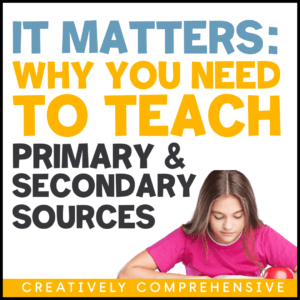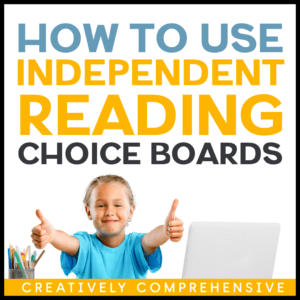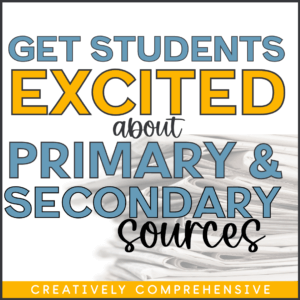Trying to find time to teach primary and secondary sources?
We tend to only view source analysis as a social studies skill, but the idea of looking at information critically is equally as important for reading comprehension, especially when dealing with nonfiction text! Let’s go over a few ways you can integrate discussion of primary and secondary sources into your reading block.

Ready to start teaching now? Grab the Primary and Secondary Sources Activity Kit to get everything you need to engage your students in this subject!
Table of Contents
Reading comprehension is not just answering questions about a text. It involves being a critical consumer of content, which is why everyone will benefit when you incorporate primary and secondary source analysis into your ELA instruction. Here are some quick tips you can get started with right away:
Use Primary Sources to Provide Background Information
Students often lack the background knowledge needed to truly understand historical fiction. Primary source material is a great way to help our upper elementary friends develop a frame of reference for the fictional text they are reading.
For example, pairing “The Watsons Go to Birmingham – 1963” by Christopher Paul Curtis. with”Letter from Birmingham Jail” written by Dr. Martin Luther King Jr. could help students gain a deeper understanding of the struggles and injustices referenced in the book.
Of course, the age group of your students will determine HOW you utilize the primary sources you bring in to enhance your lessons. Spend time before the lesson carefully selecting what resources you use, and decide if the full resource is necessary or if your students would benefit more from an excerpt.
New to using primary sources? The Library of Congress has a great page devoted to using primary sources in your classroom.
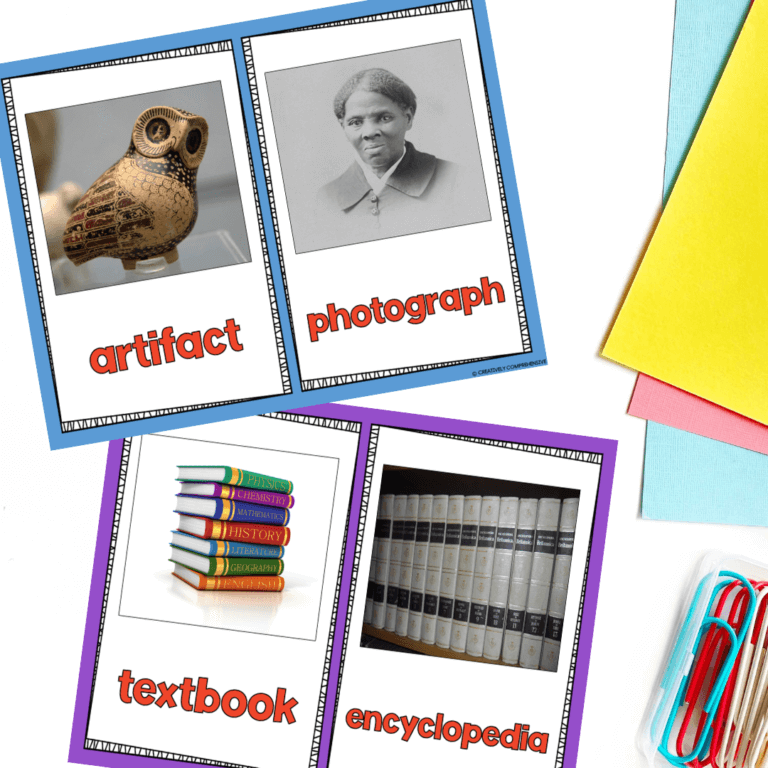
Do you have a lot of visual learners? Grab this free set of posters featuring real examples of the most commonly used primary and secondary sources.
Utilize All Types of Informational Text
Did you know that most standardized reading comprehension texts include up to 70% nonfiction? It’s important to expose your students to all different kids of informational text, as well as text features. For example, if you are learning about a certain type of animal in science, make sure to utilize materials such as maps showing where the animal would most likely be found, or charts comparing various characteristics of that animal to other animals. The more sources that can be referenced, the better!
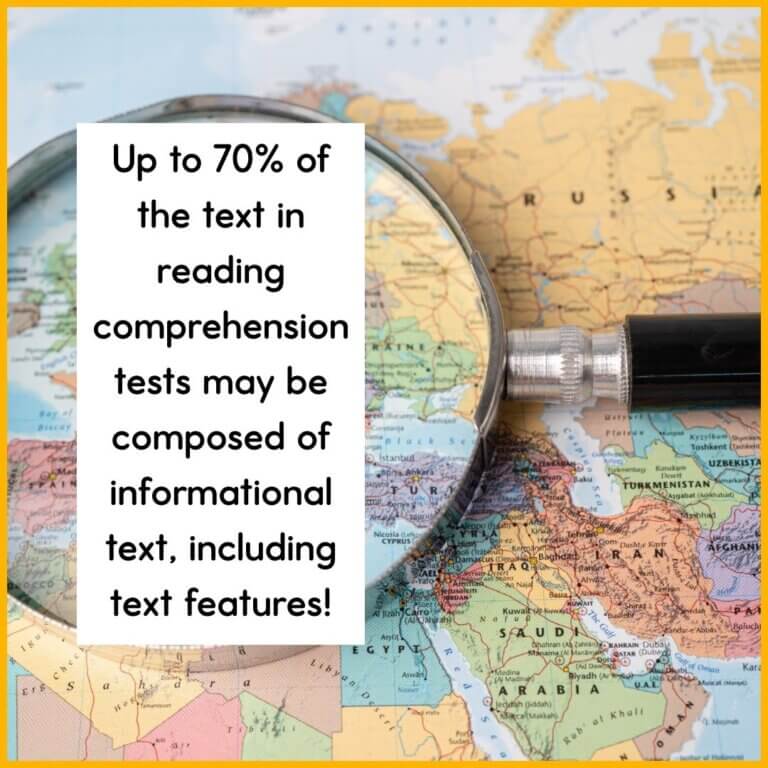
Make Source Analysis Part of Your Daily Routine
This can be as simple as leaving a sticky note with a few questions on each book you read. What type of source is this? How do you know? For secondary sources or fiction- what source material did the author reference? What might have shaped the author’s viewpoint? These questions will get your students on the path to thinking about everything they read through a critical lens.
More Help with Integrating Primary and Secondary Sources Into ELA
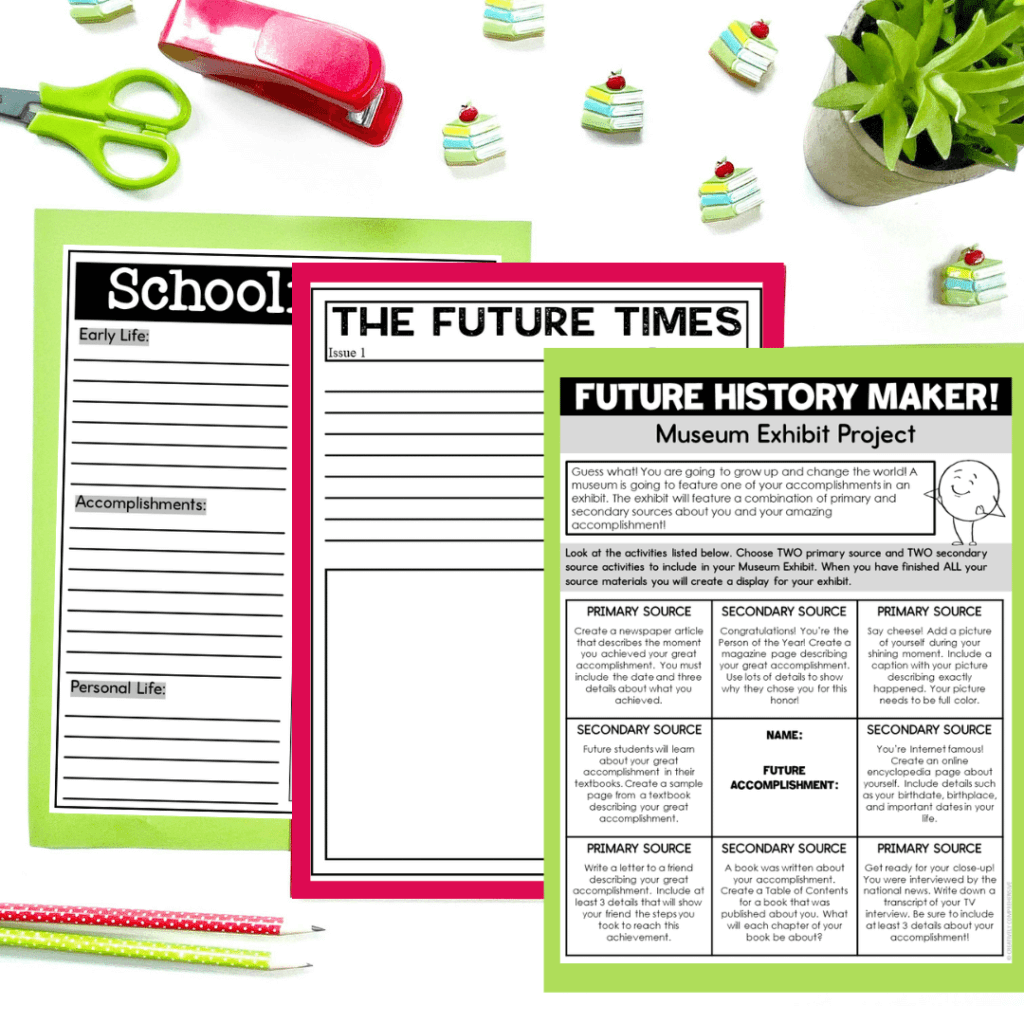
Too busy to think of engaging Primary and Secondary Sources activities on your own? I’ve got you covered!
Over 3000 teachers have used my Primary and Secondary Sources activities in their classroom with great results! Head to TPT to see their reviews as well as a full preview of the product, or grab right now from my website store:

